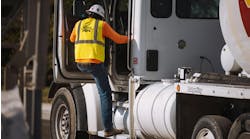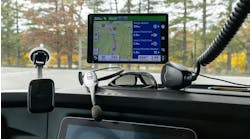Atlas Trucking & Logistics faced pushback from some of its drivers when it installed video cameras inside its trucks in 2018. One driver went so far as to leave the motor carrier. It took one tragic highway accident that left a passenger car driver a quadriplegic to change the minds of most of Atlas’s 19 company drivers and more than 100 owner-operators.
Jeff Bronson, senior director of transportation at Atlas, said without the video evidence, the company would have “fired the driver immediately, and we’d probably be facing a $40 million lawsuit that we would have lost.”
Because of the video, Atlas proved the crash was not its driver’s fault—despite the police report saying otherwise. And the driver got to keep his job.
This example is just one of the reasons video technology is turning the corner. More fleets are using it, and more drivers are accepting—and even embracing it.
Beyond the safety aspect, the data accumulated from video has the potential to shape operations and improve driver coaching.
Using video technology allows fleets to gain visibility into drivers’ habits behind the wheel, according to Jeremy Stickling, chief administrative officer for truckload carrier Nussbaum Transportation.
“Instead of saying, ‘Hey, we think we’re paying for a safe driver here because they haven’t had any accidents,’ it’s ‘We know we’re paying for a safe driver because of the lack of those following-distance instances, because of the lack of erratic lane changes, or because of those things that we didn’t necessarily have this ability to see before camera-based technology came into play.”
Fleets are becoming more proactive by using video as a teaching tool.
“One of the most important things we’ve used it for is coaching,” said Ronnie Holland, director of safety for TCW, which has a fleet of 300 trucks and 500 drivers. “It’s not [used] to condemn a driver if they made a mistake. It’s to coach with them.”
Before video, most truck-involved crashes were blamed on the biggest vehicle involved in the incident and cost fleets lots of money in litigation. That is changing.
A recent Federal Motor Carrier Safety Administration study of more than 5,600 truck and bus crashes found that nearly 94% were not preventable by the motor carrier or commercial driver.
“What happens is these videos and data start to prove that,” said T.J. Thomas, director of marketing and customer solutions for the control group at Bendix Commercial Vehicle Systems. “The fleets get the video and data around a collision, and it proves that their driver and their fleet weren’t the cause of the accident. Then they start getting exonerated from these lawsuits.”
At the same time, fleets are now seeing that “the bigger opportunity is what I’ll call ‘video data’—not just video—and how objective information can literally transform not just safety but operations,” said SmartDrive CEO Steve Mitgang.
This is the first part of a five-part feature on how cameras and video are changing fleets and drivers as the new decade dawns. We'll take a deeper look at the data, coaching and legal benefits of video in trucking this week. Read Part 2 and Part 3.



